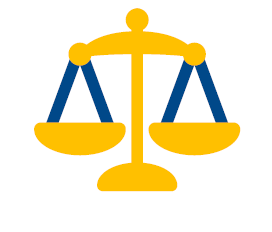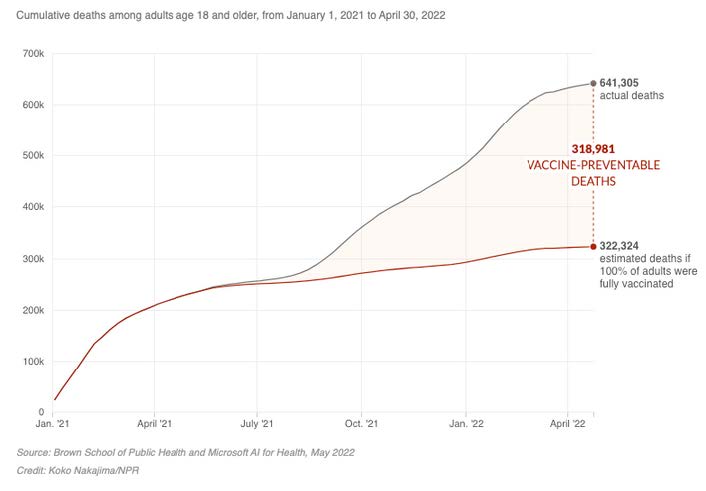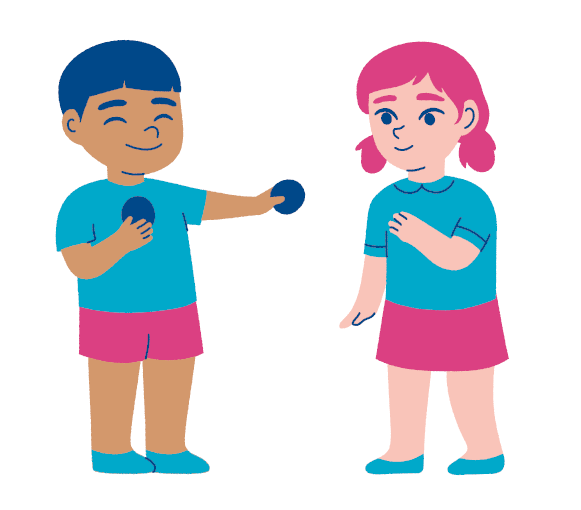
Inside this Toolkit:
Introduction: What is false balance?
Outbreaks of vaccine-preventable diseases, the pandemic, and controversy over legislative attempts to strengthen state immunization laws mean that vaccines are often in the news.
While it’s easy for members of the media to track the development of new vaccines and report on disease outbreaks using data from state health departments, the Centers for Disease Control and Prevention, and other sources of medical and scientific information, it can be far more difficult to accurately report on the social aspect of vaccines.
Reporting on the perceived controversy over the safety and effectiveness of vaccines can be particularly difficult—especially since no controversy involving the safety and effectiveness of vaccines exists in public health.

Still, reporters often find the manufactured controversy interesting, since it stirs up a great deal of public interest.
And, because journalists are trained to take an objective approach to their reporting and to provide balance, they can fall prey to what is termed “false balance.” This common journalistic error can have particularly unfortunate results in the realms vaccines and infectious diseases.
Recognizing False Balance

Giving scientifically invalid ideas equal weight to established and verifiable scientific facts by
including them in the piece without addressing the fact they are false (e.g., allowing an interviewee to say her child’s autism was caused by vaccines without including a correction—by the reporter—that scientific consensus shows this parent’s statement is unwarranted based on the evidence).

Giving a person with a scientifically invalid position on vaccines but no expertise equal weight to a vaccine expert whose explanation is aligned with scientific facts (e.g., interviewing a parent who feels vaccines contain “toxins” alongside a doctor discussing the safety of vaccines–making it appear as though their positions are equally valid when they are not).

Allowing the social controversy to seem larger than it actually is. (e.g. interviewing only parents who refuse vaccines for their children, even though well over 90% of parents do vaccinate their children).
What's at stake?
Focusing on the social controversy of vaccines is tantalizing, but it does not present the public with an accurate understanding of vaccines.
Reporting on science is different from reporting on politics because with science, the facts are reproducible and verifiable. Underplaying the science to emphasize the social controversy can mislead families about vaccines, leading to decisions that are not based on correct facts and accurate risk assessment.
When it comes to vaccines, the costs of such misrepresentations can literally make people sick.

Case Study: Andrew Wakefield

The results of the reporting about Andrew Wakefield’s fraudulent article on the MMR vaccine which was published in The Lancet was a dramatic decrease in immunization coverage for that vaccine, and which resulted in the reintroduction of measles in the UK, which was once eliminated and is again endemic.
Unfortunately, this unfounded fear of the MMR vaccine infected the United States as well, and in the second decade of the millennium, we saw the results of the media’s magnification of Wakefield’s report—unprecedented outbreaks of measles, sparked by unvaccinated individuals.
Take Action
Human interest stories are an important facet of journalism, but should not be used at the expense of verifiable fact, a hallmark of all good reporting. When personal experience contradicts scientific fact, and reporters feel compelled to include such a personal experience in a report, falling into the false balance trap is avoidable.
The journalist as reliable narrator
It is the journalist’s job to make sure the main narrative of their report is rooted in fact or scientifically verifiable consensus.
These are our tips for keeping vaccine reporting reliable and accurate:
- Avoid quoting or interviewing non-experts on scientific, medical, or other factual matters. Plenty of experts in vaccines exist at the local level: local public health, infectious disease providers, epidemiologists, etc. are often readily available to journalists. They may not be on Twitter, but calling your state, county, or city health agencies can connect you quickly.
- Avoid sharing personal stories that do not align with scientific plausibility. It is probably really tempting to report on the cheerleader who claims a vaccine gave her an Australian accent and made her walk backward, but there are better (and more factual) personal stories out there. We recommend talking to someone who relies on community immunity for their well-being or someone who used to be hesitant about vaccines but has changed their mind.
- False information and inaccuracies must be clearly corrected by the reporter—not just by someone else featured in the piece. Asking an expert to weigh in creates a false balance, making it appear that both sides have merit. In actuality, the reporter’s voice creates the overarching narrative and can let readers know when they should and should not rely on those being interviewed.
- Learn more about vaccines. Take the Vaccine Quest and learn how to Become a Trusted Messenger.
The reader as critic
We know journalism is hard, and it is a rare journalist who loves getting advice from those outside the field. That should not stop readers, listeners, and viewers of journalism from insisting on excellence in vaccine reporting.
- Ask about the story before agreeing to be interviewed. We know that having your face on the news can be exciting, but what if your face is alongside someone spewing falsehoods? Be brave enough to say no to a journalist who will also be interviewing an anti-vaxxer. And be sure to ask whom they are interviewing before saying yes.
- Point out false balance where you see it. Send a journalist this toolkit. We do recommend contacting the reporter by email or DM rather than putting them on blast, if possible. We also recommend being polite.
- Applaud good journalism. Do so publicly. Write a letter to the editor, send out a laudatory tweet/skeet, or just share these great pieces. Tag @Voices4Vaccines, too, so we can make sure good journalism gets its due.
- Be willing to share your vaccine stories. A lot of times, reporters turn to anti-vaxxers because they are willing and available. Pro-vaxxers often feel like their stories aren’t interesting enough to be told or that they won’t be good at telling their stories. Nonsense. If you have had a positive experience with vaccination, if you’ve had any experience with vaccine-preventable diseases, or if you’ve overcome your own vaccine fears, reach out to a journalist and let them know that you are ready to talk! You can also work with us to post your story on our blog.

Final Thoughts
Reporters sometimes feature people who claim, against all medical and scientific evidence, that vaccines caused some sort of damage. In fact, some of these folks are considered well-known experts and media sources.
In one media training presentation, Becky Estepp (communication director for an anti-vaccine organization) told activists that they had an “End Game,” namely: “It is up to us to change the opinions of the public. Once we win in the court of public opinion and the citizens demand change, that is when policy will be affected.”
The media is the main tool anti-vaccine activists rely upon to advance their ideas. But science is not decided in the court of public opinion, and journalists need to be on guard about falling prey to false balance in order to report accurately about the facts involving vaccines.
Additional Resources
- Brainard, C. (2013). Sticking with the truth: How ‘balanced’ coverage helped sustain the bogus claim that childhood vaccines can cause autism. Columbia Journalism Review. http://www.cjr.org/feature/sticking_with_the_truth.php?page=all#sthash.cY82FDDk.dpuf
- McMaster, G (2023, January 19). Study shows ‘false balance’ in media coverage of COVID vaccine requirement for organ transplant. Folio. University of Alberta. https://www.ualberta.ca/folio/2023/01/study-shows-false-balance-in-mediacoverage-of-covid-vaccine-requirement.html
- Sullivan, M. (2015, February 7). Another Outbreak of ‘False Balance’? New York Times. Retrieved February 10, 2015, from http://www.nytimes.com/2015/02/08/opinion/ sunday/another-outbreak-offalse-balance.html?_r=0
- Correcting this Week’s Disinformation: Voices for Vaccines Weekly Newsletter
- Association of Immunization Managers Program Manager Directory
- Taskforce for Global Health Experts
- Voices for Vaccines Experts Contact Form
© Voices for Vaccines. Excerpts and links may be used by websites and blogs, provided that full and clear credit is given to Voices for Vaccines, with appropriate and specific direction and links to the original content. Parents, providers, advocates, and others may download and duplicate toolkits in print, without alteration, for non-commercial use and with full and proper attribution only.

